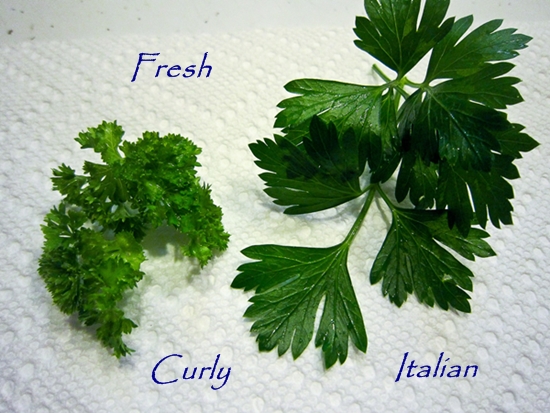As Chris describes in her article The Benefits of Growing Parsley in Your Kitchen Garden, there are three basic types of parsley: curly, Italian parsley (also known as flat leaf), and Hamburg. Her article will provide you with a good introduction to the three types of parsley and some of the basics. But in this article, we will focus specifically on how to grow Italian parsley (Petroselinum crispum neapolitanum) … just because it is my personal favorite!
Why I Love Italian Parsley
I developed an affinity for Italian parsley two years ago when I grew it for the first time and then went out back to harvest some. I grabbed a big ol’ handful, cut it back, and started back into the house. Within three steps, the sweet, savory, slightly pungent aroma of the freshly cut herb hit my nose and I stopped dead in my tracks. I held it up to my nose and inhaled long and deep. It was heaven … like nothing I had ever smelled before. To my shock and awe, I discovered that the difference between curly & Italian is indescribable. My entire house smelled incredible for three days! I still grow a little curly parley to use as a garish and in certain dishes, but since that day, 90% of the parsley space in my garden is reserved for this wonderfully fragrant Italian parsley.
Italian parsley is both robust and savory. Whether used fresh or dried, it is a wonderful addition to any dish (both meat dishes & vegetarian). It works well in sauces, salads, appetizers, and just floating on top of a soup or stew as a garnish. Because it is so much stronger than curly parsley, though, you will not need as much of it to get the desired flavor. It is also very easy to grow, harvest, and preserve and it delivers an incredible nutritional punch (more on that below)!
How to Grow Italian Parsley
Many say that this plant does well in pots, even indoors in a sunny window, and I am sure it probably does. But I am too parsley-greedy for that. I start them in pots indoors in the spring, but then transplant them in the ground after the last frost to let them go crazy. And they do go crazy!
Whether you plan to relocate your parsley out to the garden or keep them indoors in pots, start with a quality potting soil mixed with some good compost and a little sand for good drainage. You can start your parsley any time of year (except outdoors in the dead of winter, of course), but note that germination can take four to six weeks. It might help to soak the seeds in water for 24 hours before planting because they have such a thick seed coat. Once planted, don’t let the soil completely dry out, but don’t let it sit in standing water, either. Keep it lightly moist. Place it in the sunniest window you have or under a grow light.
Once your seedlings reach about 3 inches tall, have 6-8 leaves, and the night time temps are above 40°F, you can harden them off and get them planted outdoors. Ensure the soil is quality garden soil with compost mixed in and good drainage. No parsley “likes” to be transplanted, and at first, will seem a little unhappy, but it will snap out of it and perk up in a week or two. Be patient.
If you are in a mild climate, full sun is best. But if your summers are brutally hot, pick a spot with filtered sunlight or partial shade. They like full sun, but not scorching heat. They would prefer the shade in that case.
Parsley is a biennial. It takes two growing seasons to reach maturity and go to seed. It requires several weeks of cold weather (even snow covered) to complete the life cycle. Note that when parsley is busy flowering and setting seed in the second year, it is not nearly as tasty, so for culinary purposes, you probably want to start a new plant every year. But if you always have at least one plant in its second year, you can save seeds for your next season rather than having to buy more seeds. Beware, parsley seeds are toxic, so don’t include them in your food.
Page 2: How to Harvest and Preserve Italian Parsley









This is a wonderful post. I have not yet grown Italian parsley (or any parsley), but the more I experiment with cooking, the more I see fresh parsley in recipes. I think I will definitely be trying it this year.
Thanks, Andrea! I just LOVE my herb garden! I hope you do venture down this path. The difference between store bought and homegrown is … just wow! Once you do it, you will never want to buy store bought again! Love, Jo!
So excited to see your post Jo! Just yesterday I planted my herbs and now you make me think I need to go back and plant some more flat leaf parsley! I have curly in the kitchen window now brought in to over winter and it has done very well. As usual you have inspired me to grow and do more. Thanks for the great post!
Thanks, Rachelle! I am excited for the opportunity to write for Untrained Housewife! I am so glad you enjoyed this post and I hope you do plant some more flat leaf! I feel like there is never enough! LOL! Have a great evening! Love, Jo